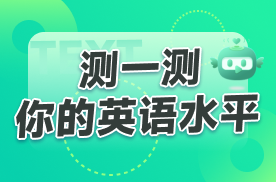2015职称英语考前预测:卫生类概括大意练习(8)
2015-03-04 14:06
来源:新东方网整理
作者:
Aspirin — a New Miracle Drug
1. Using aspirin, an over-the-counter pill on sale1 in every supermarket without a prescription, to treat serious circulatory disease may seem almost like quackery. But today doctors recognize this drug as a potent compound as important as antibiotics, digitalis and other miracle drugs.
2. In its natural form as willow bark and leaves, this remarkable remedy dates back to Hippocrates2. In 1829 the chemical in the willow tree that can relieve pain and reduce fever was discovered to be salicin. By 1899 the Bayer Company in Germany had marketed a variant, acetylsalicylic acid,3 under the name of aspirin.
3. Since then, aspirin and confounds containing aspirin have been taken by tens of millions of arthritis patients. As a pain killer aspirin is, according to one study, more effective than all other analgesics and narcotics available for oral use. It also acts on4 the body’s thermostat, turning down fever.
4. But some of its powers remained unsuspected until recently. In 1950 the late Dr. Craven wrote to a small western medical journal about 400 overweight, sedentary male patients to whom he had given one or two aspirin tablets a day. None had had a heart attack. He enlarged his group to 8,000 and in 1956 reported:”Not a single case of detectable coronary or cerebral thrombosis5 ” and “no major stroke” had occurred in patients who had taken one or two tablets daily for from one to ten years. But his observations were largely ignored.
5. Then Dr. Vane proved that aspirin turned off the body’s prostaglandins6 hormonelike chemicals that can be secreted by every cell. Some potent prostaglandins are harmful compounds that create fever, pain and arthritis. One of them stimulates platelets in the blood to begin forming clots inside arteries. Aspirin blocks this dangerous effect.
6. Vane’s finding caused some researchers to recall Craven’s 1956 observations, which now had a possible scientific explanation. Numerous studies were begun to find out whether aspirin could indeed inhibit heart attacks and stroke.
7. In 1972, ten US medical institutions began two “double-blind” trials7 of 303 patients who suffered from transient ischemic attacks (TIAs)8. Four aspirin tablets a day were given to 153 patients, while placebo tablets were given to 150. Neither patients nor doctors knew which was which. After six months, the patients on aspirin had experienced much fewer TIAs, and fewer strokes and deaths from strokes than the “controls”. The results were so conclusive that aspirin has been used for this purpose widely.
练习:
1.Paragraph 2
2.Paragraph 3
3.Paragraph 5
4.Paragraph 7
A Confirmation of the New Effect
B Pain-relieving and Fever-reducing Effects of Aspirin
C The Ignored Significant Observations
D The Origin of Aspirin
E An Explanation of Craven’s Observations
F Further Findings of Dr. Vane
5.In the middle of the last century Craven made .
6.It is Bayer Company .
7.There is a prostaglandin .
8.Numerous studies concluded .
A that aspirin has a positive effect on heart attacks and strokes
B two “double-blind” trials of patients with heart disease
C that first produced aspirin for sale
D the unsuspected effect on pain and fever
E important observations on the effects of aspirin
F that may cause clots to be formed in the arteries
答案与题解:
1.D 第二段叙述了从希波克拉底时代开始使用柳树皮和柳树叶来止痛、退烧到德国拜尔公司率先制造出阿司匹林出售的过程,故D应为正确答案。
2.B 第三段只讲阿司匹林的止痛和退烧两种作用。
3.F 第五段讲道Dr. Vane的新发现,证明阿司匹林可以阻断一种前列腺素引起动脉血管内凝血的有害作用,故F为正确答案。
4.A 第七段叙述了美国10个医疗机构所进行的“双盲”试验,结论证实了以前所提出的阿司匹林具有预防中风和血栓形成的作用,故A为正确答案。
5.E 第四段叙述了Dr. Craven在20世纪50年代对阿司匹林能预防心血管疾病的重要观察资料。
6.C 第二段最后一句说的就是拜尔公司率先以阿司匹林的商品名出售乙酰水杨酸的。
7.F 第五段最后两句说的就是有一种前列腺素能刺激血小板形成动脉内的血块,而阿司匹林可以阻断它的有害作用。
8.A 此题答案的根据是第六段和第七段。第六段最后一句说开始了大量研究以证明阿司匹林是否能抑制心脏病发作和中风。第七段最后一句对此给出了肯定的结论,而且目前阿司匹林已被广泛应用于这个目的。
更多精彩内容 >> 新东方网英语频道
全国新东方英语课程搜索
(责任编辑:何莹莹)
|
|
|
|







